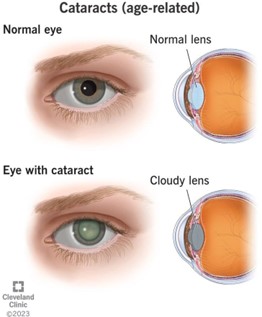A nurse is collecting data from a client who is 1 day postoperative following a total hip arthroplasty and has
deep-vein thrombosis. Which of the following findings should the nurse expect in the affected extremity?
Absent dorsal pedal pulse
Shiny, hairless skin
Irregular, bulging veins
Dull, aching pain
The Correct Answer is D
Choice A:
An absent dorsal pedal pulse would indicate a vascular problem such as arterial occlusion, not a deep vein thrombosis (DVT). In the case of DVT, blood flow in the veins is obstructed, but the arterial pulse, which is related to arterial circulation, should remain intact unless there is a separate arterial issue. Therefore, absent pulses are not characteristic of DVT.
Choice B:
Shiny, hairless skin is a sign typically associated with chronic arterial insufficiency, not DVT. This skin change occurs when there is poor arterial blood flow, which leads to a lack of nourishment for the skin, causing it to become thin and shiny. In contrast, DVT affects the veins and does not usually cause these skin changes in the acute phase.
Choice C:
Irregular, bulging veins are indicative of varicose veins or chronic venous insufficiency, not a DVT. Varicose veins occur when the veins become swollen and twisted due to weak or damaged valves. DVT, on the other hand, involves the formation of a clot in the deep veins and does not typically cause the veins to bulge visibly, especially in the early stages.
Choice D:
Dull, aching pain is a common symptom associated with deep vein thrombosis. This pain typically occurs in the affected extremity and is often described as a constant, aching sensation. The pain can worsen with movement or standing and is due to the inflammation and obstruction caused by the blood clot in the deep veins. This is a hallmark sign of DVT, along with swelling and redness in the affected limb.
Nursing Test Bank
Naxlex Comprehensive Predictor Exams
Related Questions
Correct Answer is B
Explanation
Cloudy vision is a symptom of cataracts. Cataracts occur when the lens of the eye becomes cloudy, causing visual disturbances such as cloudy or blurry vision.The other options are not typical symptoms of cataracts.
a) Sudden dimmed vision may be a symptom of other eye conditions.
c) Intermitent flashes of light (option c) may be a symptom of other eye conditions such as retinal detachment.
d) Pain in the eyes (option d) is not a typical symptom of cataracts.

Correct Answer is A
Explanation
After the nurse administers a PRN pain medication to a client, the nurse can assign the assistive personnel (AP) to document the client's respiratory rate in 1 hour. This is within the scope of practice of an AP.
The other tasks are not appropriate for an AP to perform.
Monitoring the client for an allergic reactionand evaluating the client for therapeutic effects are both nursing assessments that should be performed by the nurse.
Checking the client's response to the medication is also a nursing assessment that should be performed by the nurse.
Whether you are a student looking to ace your exams or a practicing nurse seeking to enhance your expertise , our nursing education contents will empower you with the confidence and competence to make a difference in the lives of patients and become a respected leader in the healthcare field.
Visit Naxlex, invest in your future and unlock endless possibilities with our unparalleled nursing education contents today
Report Wrong Answer on the Current Question
Do you disagree with the answer? If yes, what is your expected answer? Explain.
Kindly be descriptive with the issue you are facing.
